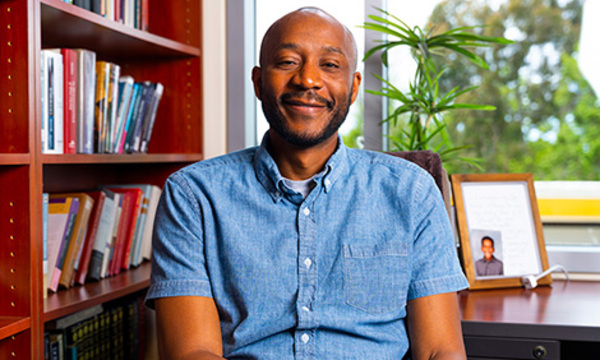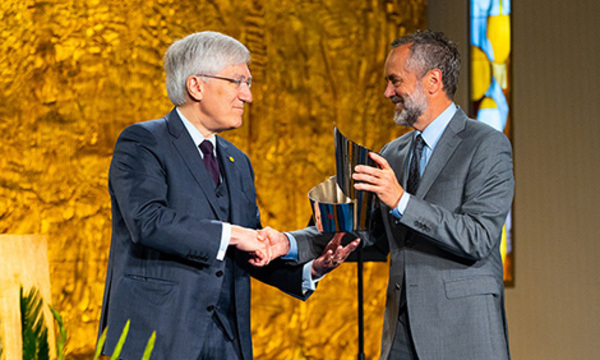Brian Hall (’96) may not be a movie star, but the computer software he helped to develop has quickly become one — reaching such heights that it recently earned the Biola graduate one of film’s most prestigious honors.
In February, Hall and two colleagues at Sony Pictures Imageworks earned an Academy Award for technical achievement — one of just nine Scientific and Technical Awards handed out this year — for their work on Katana, an industry-changing software that has played an important role in such films as The Amazing Spider-Man and Oz the Great and Powerful.
Hall, a graduate of Biola’s computer science department and the first Biola graduate to receive an Academy Award, recently shared about his journey in developing Katana.
I didn’t plan on working in the film industry specifically, but knew I wanted to do something related to graphics or interactive software. I had dabbled with writing some (very cheesy) video games in junior high. At Biola, I took a computer graphics class with Dr. Peter Woo that really sparked my interest in graphics.
In my junior year at Biola, I met Rob Bredow, the current CTO at Sony Pictures Imageworks, as a fellow student, in a Bible course of all places. We got to talking after class about his work in visual effects for some TV shows, and that summer he brought me on as an intern at the small visual effects company where he worked. That’s the short story of how I got into this field.
In 1996, graphics cards were much less powerful than the graphics chip in your iPhone and were only available on workstations that cost tens or hundreds of thousands of dollars. So you’d think that our job has gotten really easy with all this computing power. However, the complexity and realism that we want to put into our visual effects has risen as well.
It is now common to have scenes with computer-generated characters in a computer-generated city, with amazing detail, down to air conditioning units on buildings and cars, crowds and street lamps on the ground. So it’s an ongoing challenge for us to write software tools to take advantage of the latest advances in hardware.
In both visual effects and animation, we are striving to make our images appear realistic. This requires us to have visual complexity similar to that of the real world. For example, in the recent The Amazing Spider-Man, when Spider-Man is swinging through the streets of New York, entire sequences — including the buildings, lights, cars, crowds and Spider-Man himself — are computer rendered.
Katana is a software tool that artists use to manage and art direct all this complexity. The core concept in Katana is that we allow artists to make changes at any level of the scene without requiring them to work with all of that complexity at once, which would be an overwhelming task both for the artist and the computer.
The end result is more flexibility for film directors and better looking final images.
In addition to a solid education in computer science I received at Biola, the time spent together with other computer science majors and professors was invaluable. I’m particularly thankful for the impact of Dr. Thurber, Dr. Stangl, Dr. Woo and Mr. Seitz.
The World Wide Web was just starting to take off as most of my class was graduating in the mid- 90s. A couple friends took it upon themselves to set up a “Server O’ Companions” that we still use to keep in touch today.
Many of us are now working as programmers, network engineers, Web developers, music video producers, pastors and as a technology missionary in Papua New Guinea. It’s so great to have this wealth of experience to rely on from friends now scattered all over the world, based on a few years that we spent together at Biola.
 Biola University
Biola University.jpg)

